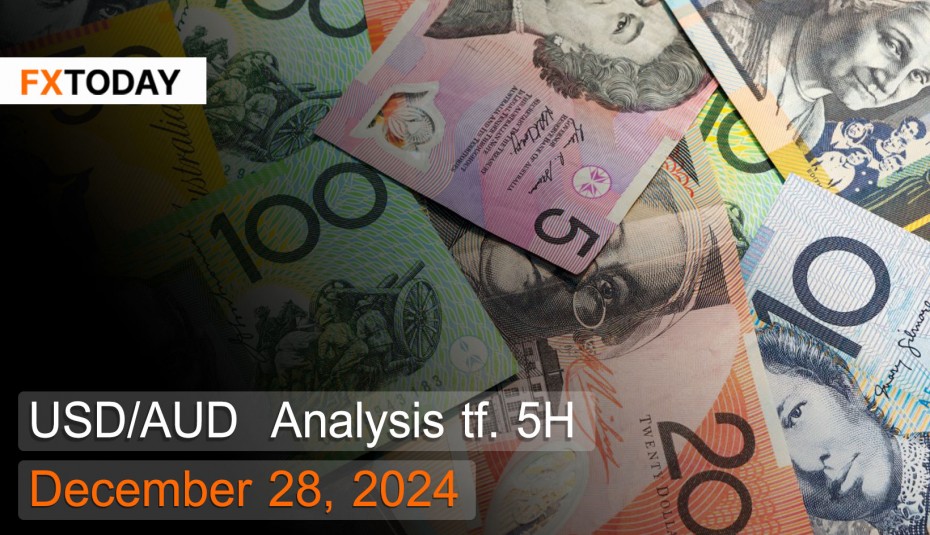Australia continues to face inflation challenges.
The Australian dollar has slightly depreciated, primarily pressured by the persistent strength of the US dollar. Investors continue to assess the US interest rate outlook following the Federal Reserve's decision to delay interest rate cuts until next year. This has kept other currencies, including the Australian dollar, under ongoing pressure. However, the Reserve Bank of Australia's (RBA) decision to maintain interest rates during its December meeting and its emphasis on the necessity of maintaining tight monetary policy to combat inflation quickly have helped prevent further depreciation of the Australian dollar.
Inflationary risks in Australia have eased somewhat, but other obstacles remain in controlling inflation. Global economic conditions, particularly escalating geopolitical tensions, have contributed to rising import costs. Additionally, the rapid increase in domestic service sector inflation reflects sustained demand in this sector, particularly from domestic sources, despite rising labor and material costs.
The RBA remains committed to bringing inflation back to its target of 2-3% sustainably. Currently, core inflation, which excludes volatile food and energy prices, remains high at around 3-3.5%, significantly exceeding the central bank's 2-2.5% target range. This has prevented policymakers from specifying a clear timeline for interest rate cuts, as they must prioritize inflation control. Some investors predict an initial rate cut in February, potentially by 50 basis points, to stimulate the slowing economy, citing this year’s weaker GDP growth.
China’s economic data also directly impacts Australia’s economy, given its status as a key trading partner. While China has injected 300 billion yuan into its domestic economy, Australian exports may not see significant growth due to China's overall economic slowdown. Additionally, China's import data continues to show a downward trend, aligning with deflationary risks and rising unemployment amid declining new orders.
The yield on Australia’s 10-year government bonds stands at approximately 4.44%, reflecting greater confidence among RBA policymakers in controlling inflation, despite certain risks. Domestic economic data continues to highlight household spending as a crucial factor. The RBA aims to encourage spending in this sector without it becoming excessive. Recent increases in spending during October and November appear to be short-lived, driven by seasonal events such as Black Friday, and may not reflect a sustained upward trend.
Techical analysis data (5H)
Resistance: 1.6121, 1.6132, 1.6151
Source: Investing.com
Buy/Long 1: If the price touches support in the price range of 1.6072 - 1.6091 but cannot break the support at 1.6091, you may set a TP at approximately 1.6132 and SL at around 1.6061 or according to your acceptable risk.
Buy/Long 2: If the price breaks the resistance in the price range of 1.6121 - 1.6132, you may set a TP at approximately 1.6151 and SL at around 1.6072 or according to your acceptable risk.
Sell/Short 1: If the price touches resistance in the price range of 1.6121 - 1.6132 but cannot break the resistance at 1.6121, you may set a TP at approximately 1.6072 and SL at around 1.6151 or according to your acceptable risk.
Sell/Short 2: If the price breaks the support in the price range of 1.6072 - 1.6091, you may set a TP at approximately 1.6061 and SL at around 1.6132 or according to your acceptable risk.
Pivot point December 28, 2024 00:37 AM. GMT+7
|
Name
|
S3
|
S2
|
S1
|
Pivot Points
|
R1
|
R2
|
R3
|
|---|---|---|---|---|---|---|---|
| Classic | 1.6061 | 1.6072 | 1.6091 | 1.6102 | 1.6121 | 1.6132 | 1.6151 |
| Fibonacci | 1.6072 | 1.6083 | 1.6091 | 1.6102 | 1.6113 | 1.6121 | 1.6132 |
| Camarilla | 1.6102 | 1.6105 | 1.6107 | 1.6102 | 1.6113 | 1.6116 | 1.6118 |
| Woodie's | 1.6065 | 1.6074 | 1.6095 | 1.6132 | 1.6125 | 1.6134 | 1.6155 |
| DeMark's | - | - | 1.6097 | 1.6105 | 1.6127 | - | - |
















